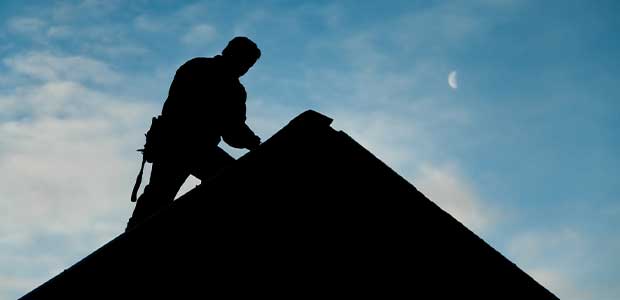
10 Important Safety Requirements for Rooftop Work
To avoid nonfatal and fatal falls, employers need to know how to keep workers safe.
- By Rupert Jones
- Jan 31, 2023
In 2016, roofers had the highest rates of nonfatal falls in the country, and that trend continues today. As roofers are the most at risk for fatal and nonfatal falls, it’s necessary that employers follow safety precautions to a T. Otherwise, plenty of people could get hurt.
10 Essential Safety Requirements for Roofers
1. Follow OSHA regulations. The roofing industry comes with risks, but multiple construction companies have been fined for fall hazards. Consistent problems in the industry have led to the formation of roofing compliance groups backed by OSHA safety regulations.
If you’re unaware of the OSHA standards for fall protection, consult an OSHA safety officer on specific requirements for rooftop work. Safety should always be top priority in the workplace.
2. Always wear a safety harness. When working on a rooftop, workers should always wear safety harnesses. These will help to prevent falls, which can be fatal. The harness should be properly fitted and attached to an anchor point that is rated for the weight of the worker. Harnesses should be tested before use.
3. Use proper equipment. Proper equipment is essential for working on a rooftop, but this equipment can vary depending on the roof you’re working on. Flat roofs are often considered the best roof for your building, as they require less equipment. However, you’ll still need ladders, scaffolding and power tools.
One often overlooked safety measure is a hard hat. No roofer should ever work without a hard hat. If falling off a bike can cause a concussion, think what a 20-foot fall could do to your body.
4. Use guardrails or safety netting. Guardrails or safety netting can provide an additional level of protection when working on a rooftop. While guardrails can stop roofers from falling off, safety netting is better for debris. Similar to the safety harness, guardrails and nettings must be tested to ensure they’re sturdy.
5. Use fall arrest systems. Fall arrest systems are hooked to a safety harness via a cord and anchor. These give roofers the freedom to walk around the roof without them worrying about falling. It’s a good idea to pair safety harnesses, fall arrest systems and safety netting together so a roofer working alone can pull themselves back to safety. Ideally, two people will work at once.
6. Use appropriate footwear. Proper footwear is essential for working on a rooftop. This includes shoes that have non-slip soles that provide good traction. High-top boots or shoes are also recommended to protect the worker's ankles.
7. Have proper training. While not all roofers have to attend a vocational school, they should work with a journey person and receive proper training before tackling roof-based projects. Trainees should perform safety related functions, use tools and equipment and organize their materials properly before starting.
Falls, falling objects, tools, heat exposure and electrocution are the five main causes of roofer injury. Employers must teach trainees to avoid these hazards and report unsafe practices.
8. Know the weather conditions. Heavy rain or snowfall can make it unsafe to work on a rooftop, but that won’t guarantee you’ll be called off work. For this reason, roofers should be extra cautious when working during harsh weather conditions. High winds, rain and lightning can all create severe falling hazards.
9. Have a communication plan. Communication is key when working on a rooftop. As stated, it’s ideal to have more than one person working on a roof at all times, but if that isn’t possible, the employee must know who to call if they need assistance. They should always have access to their cell phone or laptop.
Roofers should have a way to communicate with workers on the ground or at the office. Their phones should contain all emergency numbers, including the police, hospital and employer.
10. Inspect the rooftop before work. It’s important to inspect the rooftop before work begins. This includes looking for things like holes, loose debris and other hazards. Any hazards should be identified and addressed before work begins. If they can’t be addressed in a timely manner, postpone the job until it is.